
Slavica Eremic feeds her baby son Nikola while her husband Nebojsa sleeps. 21-year-old Slavica married Serbian Nebojsa when she was 19. Nebojsa had returned to Croatia after several years of exile in Serbia only to find his family home inhabited by a Bosnian refugee. The young family now live in what used to be Nebojsa’s grandmothers house. Jurga, Croatia.
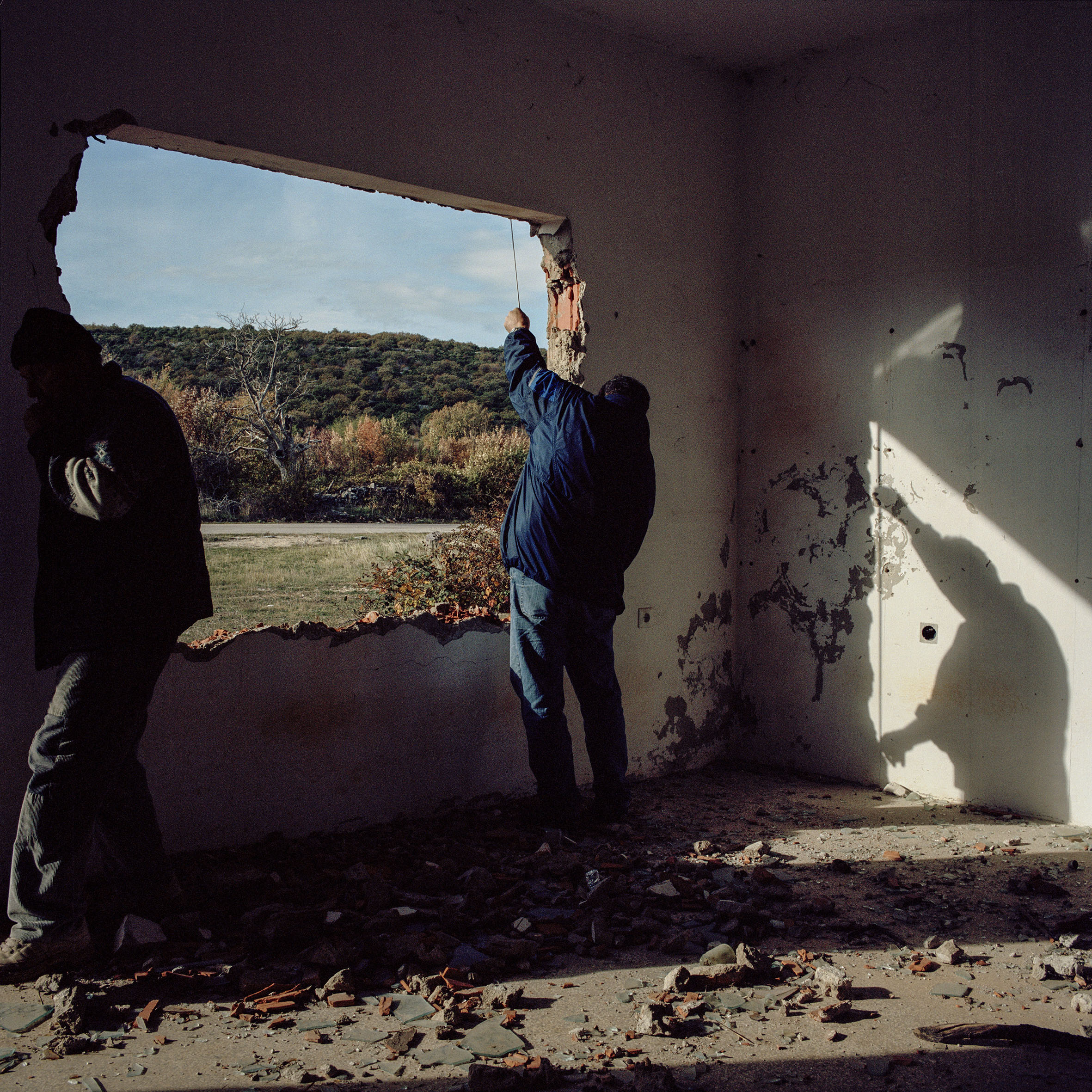
Workers from the Croatian Red Cross measure the window and door frames of Milan Calic’s destroyed home the day after he returned from 12 years of exile in Serbia. The fittings must be installed before his family can move into the house. Brgud, Croatia.
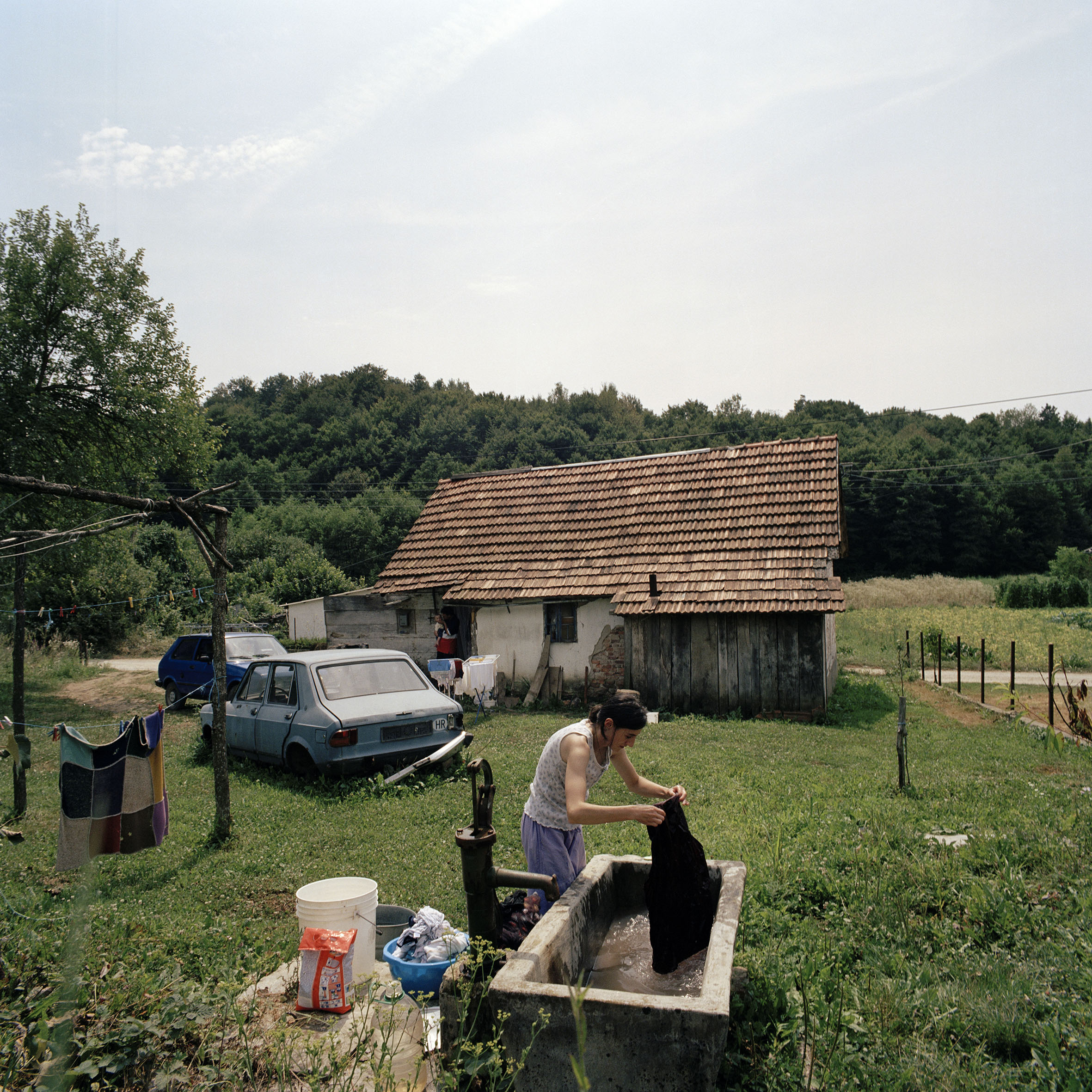
Slavica Eremic washes clothes in an outside trough in front of her house. It is their only source of running water but has been stagnant for too long and is undrinkable. Instead they must collect water from their neighbours house.
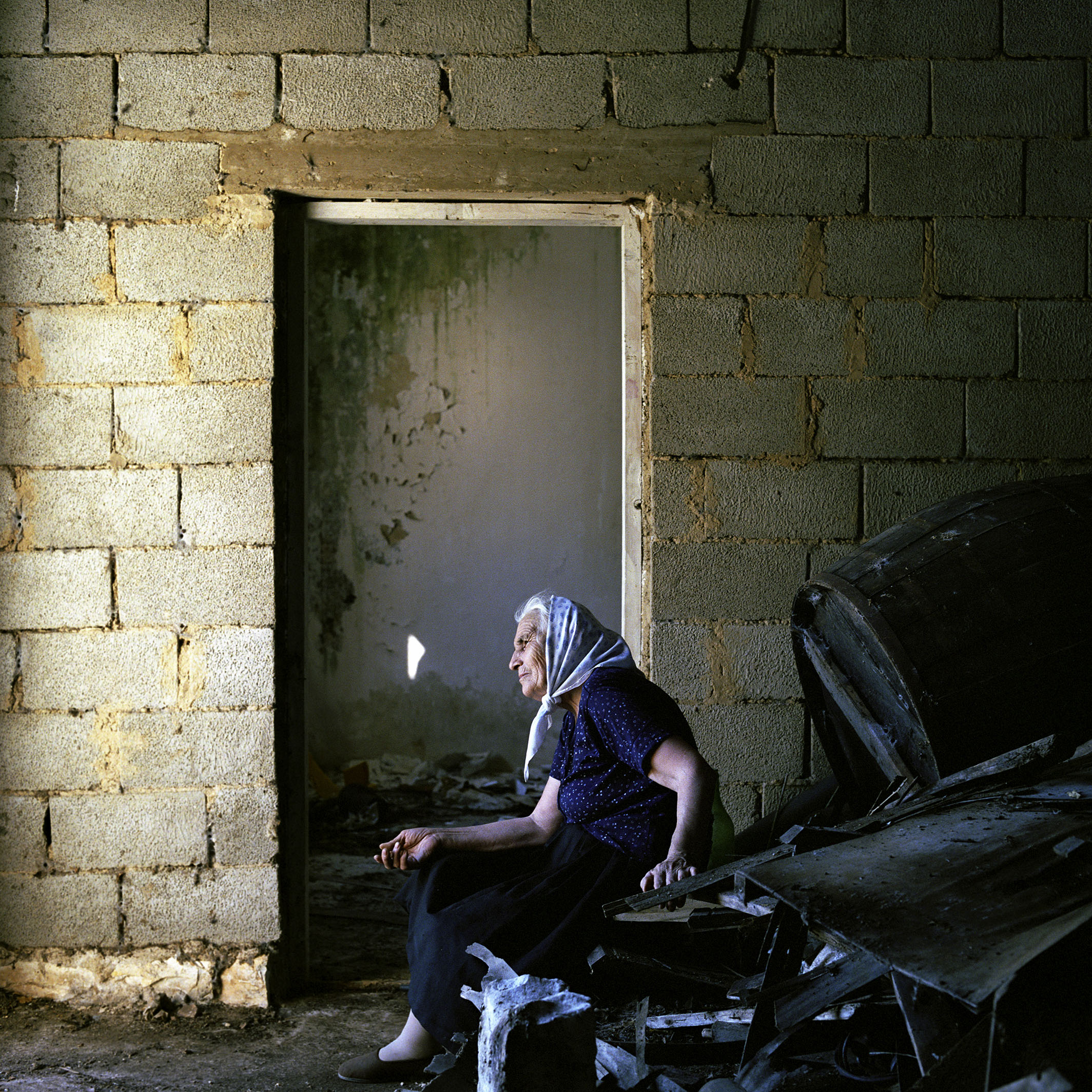
Maria Banic rests while cleaning out her dilapidated home the day after she and her husband Branko returned to Croatia from 11 years of exile in Serbia.
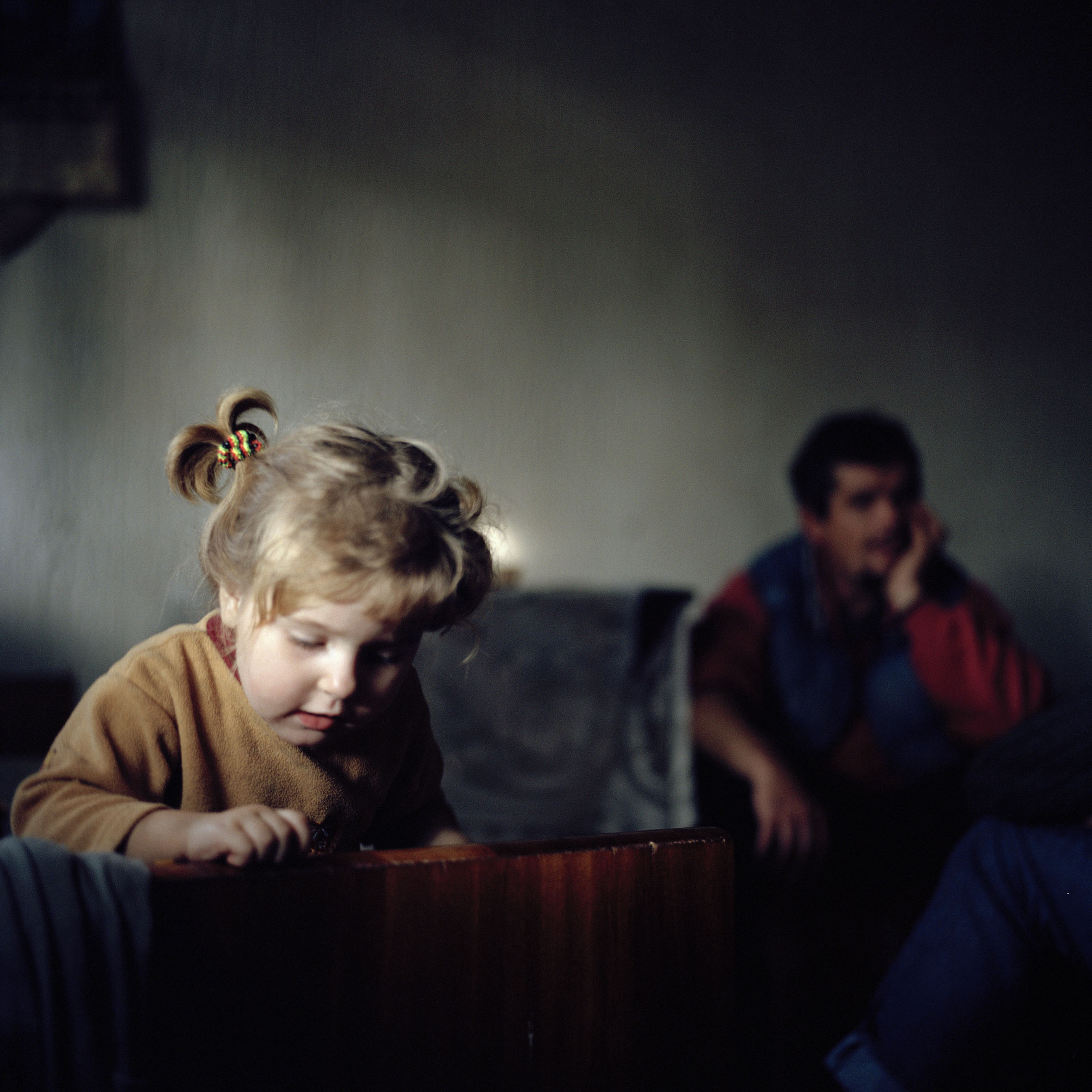
Milica Calic and her father Milan in their tiny rented room in Serbia two days before their move back to Milan's childhood home in Southern Croatia. Golobinci, Serbia
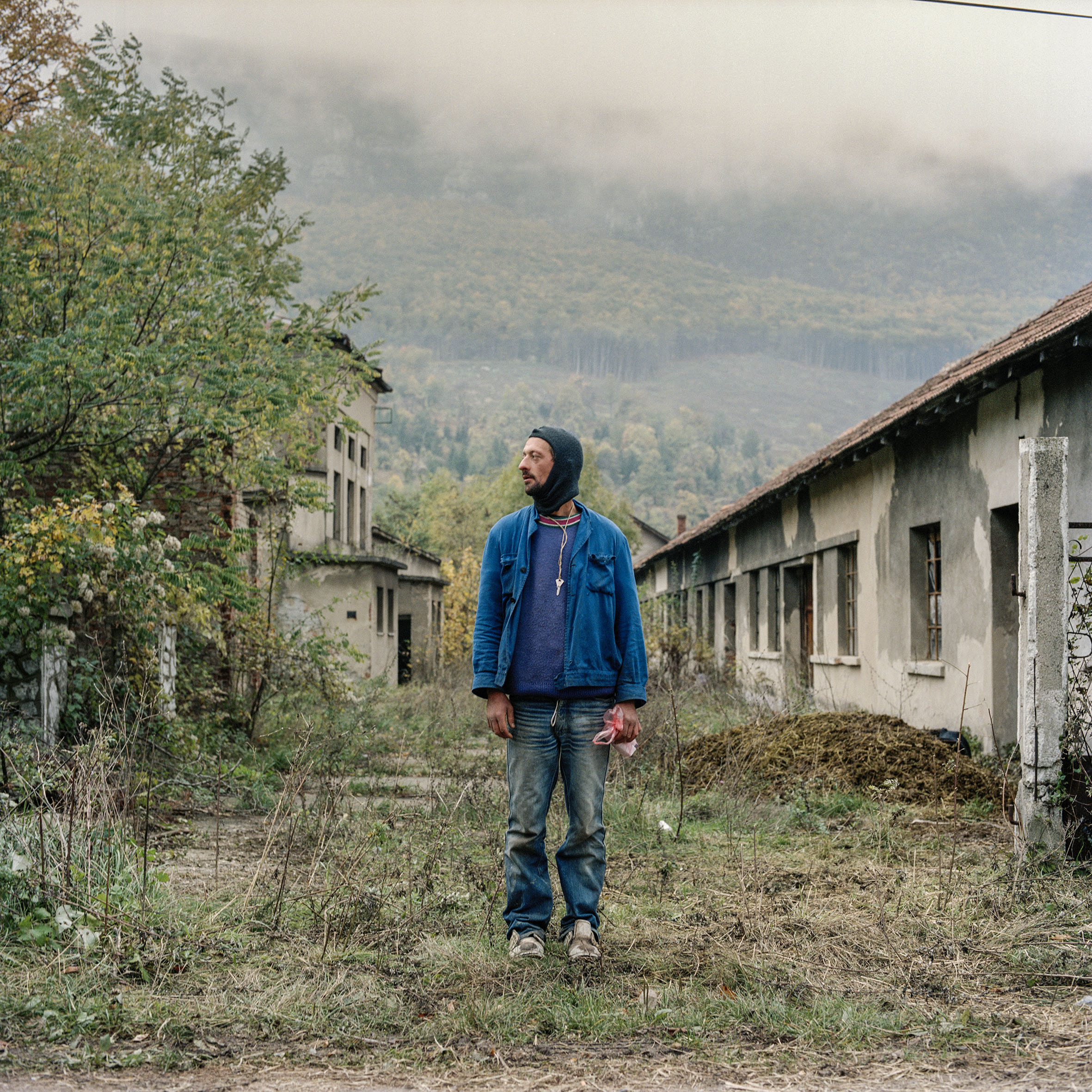
37 year old Peda Radic is from Knin in Southern Croatia but was displaced by Operation Storm in 1995. Peda lives alone in Rtanj collective centre in South Eastern Serbia. His last remaining family have turned their backs on him due to his drink problem.
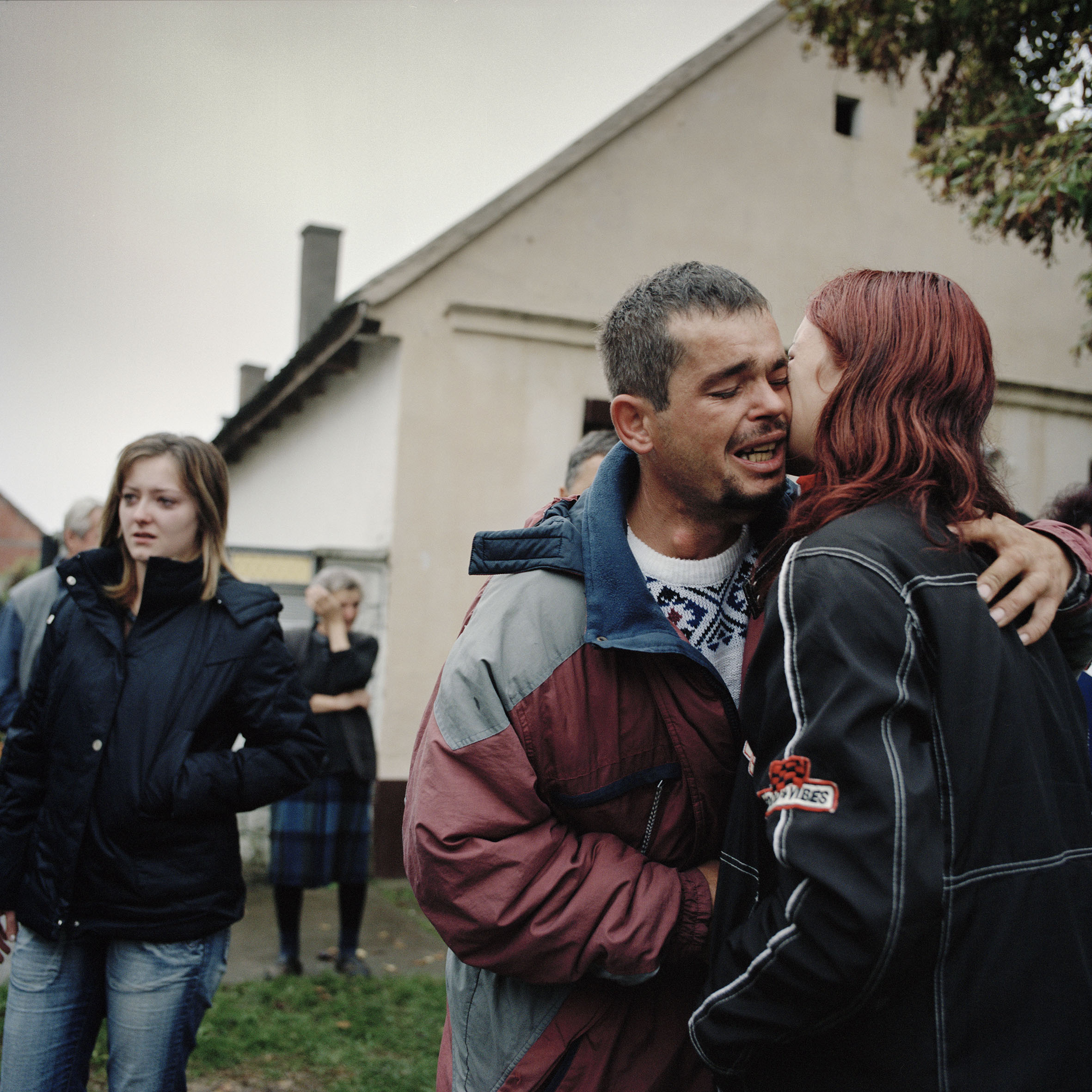
Milan Calic says goodbye to friends and family before returning to his home in Croatia with his partner and their two children. Golobinci, Serbia.
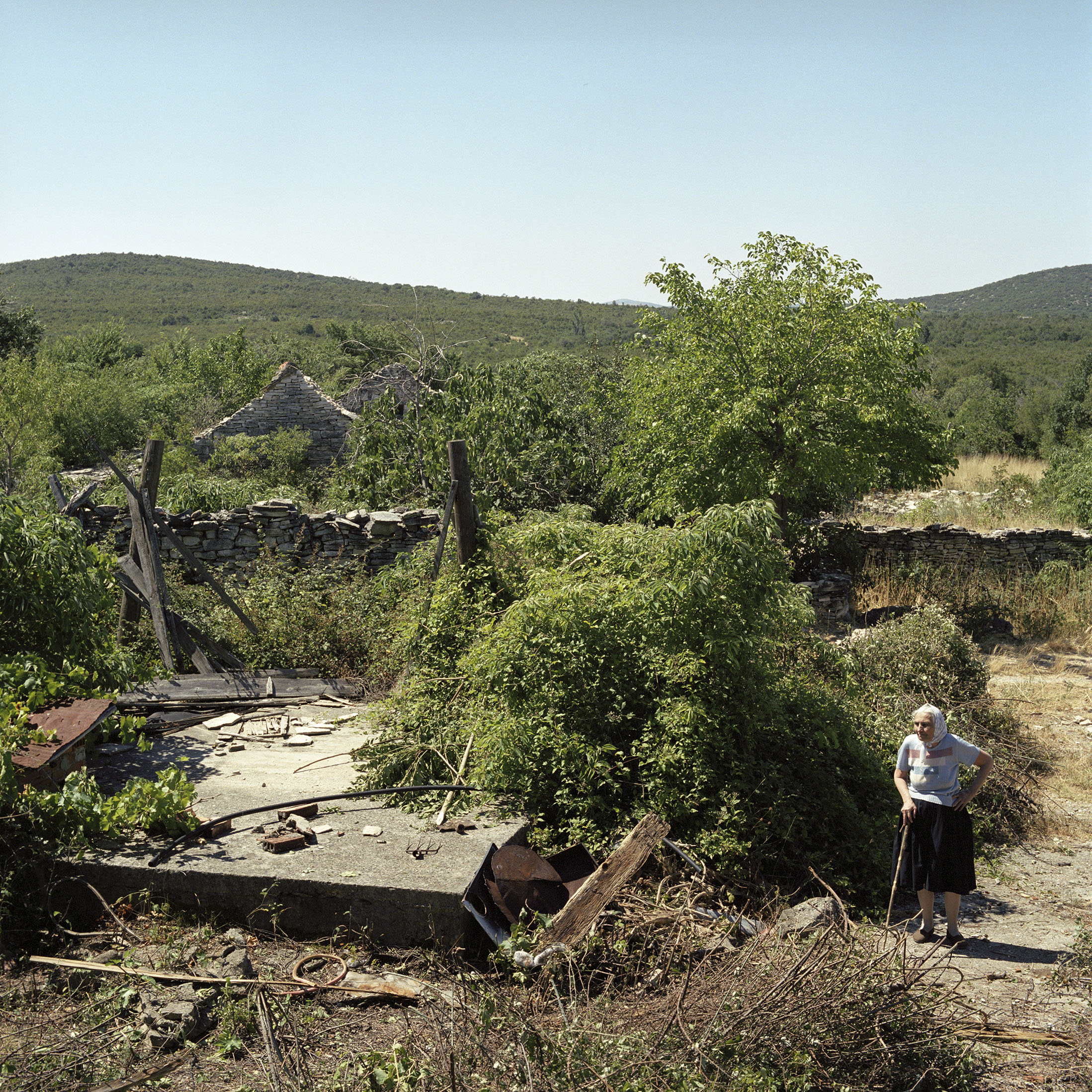
Maria Banic returns to her destroyed home near the town of Benkovac in the South of Croatia for the first time in eleven years. She and her husband Branko were part of a returnee convoy from Serbia organised by the UNHCR and Croatian Red Cross.
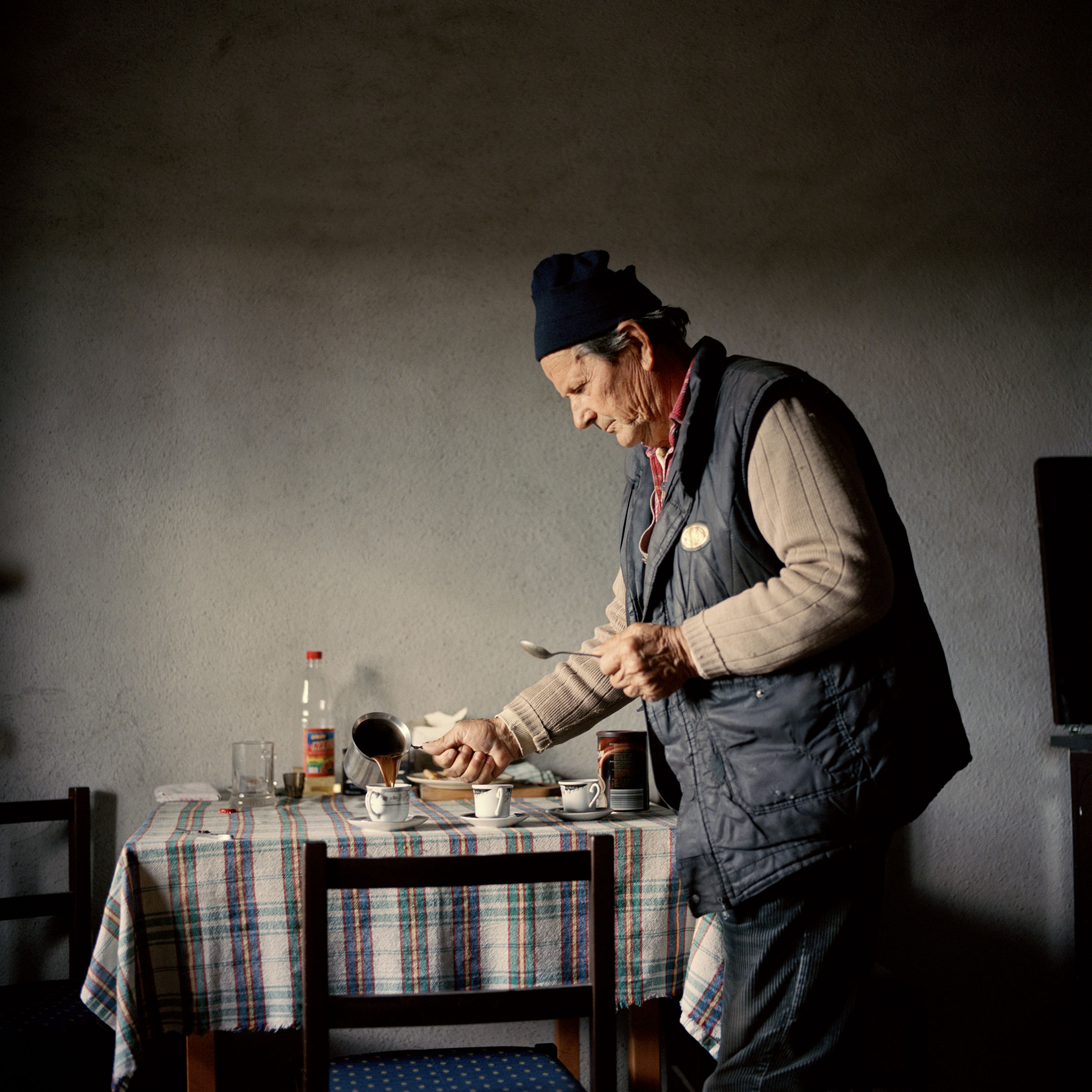
Branko Banic makes a customary cup of Turkish coffee in his newly rebuilt kitchen. When he and his wife Maria returned to Croatia in 2006 their house was completely dilapidated. After 6 months of living with cousins nearby the elderly couple were gifted some help by the Norwegian refugee council and are today beginning to gain back their old lives. Brgud, Croatia.
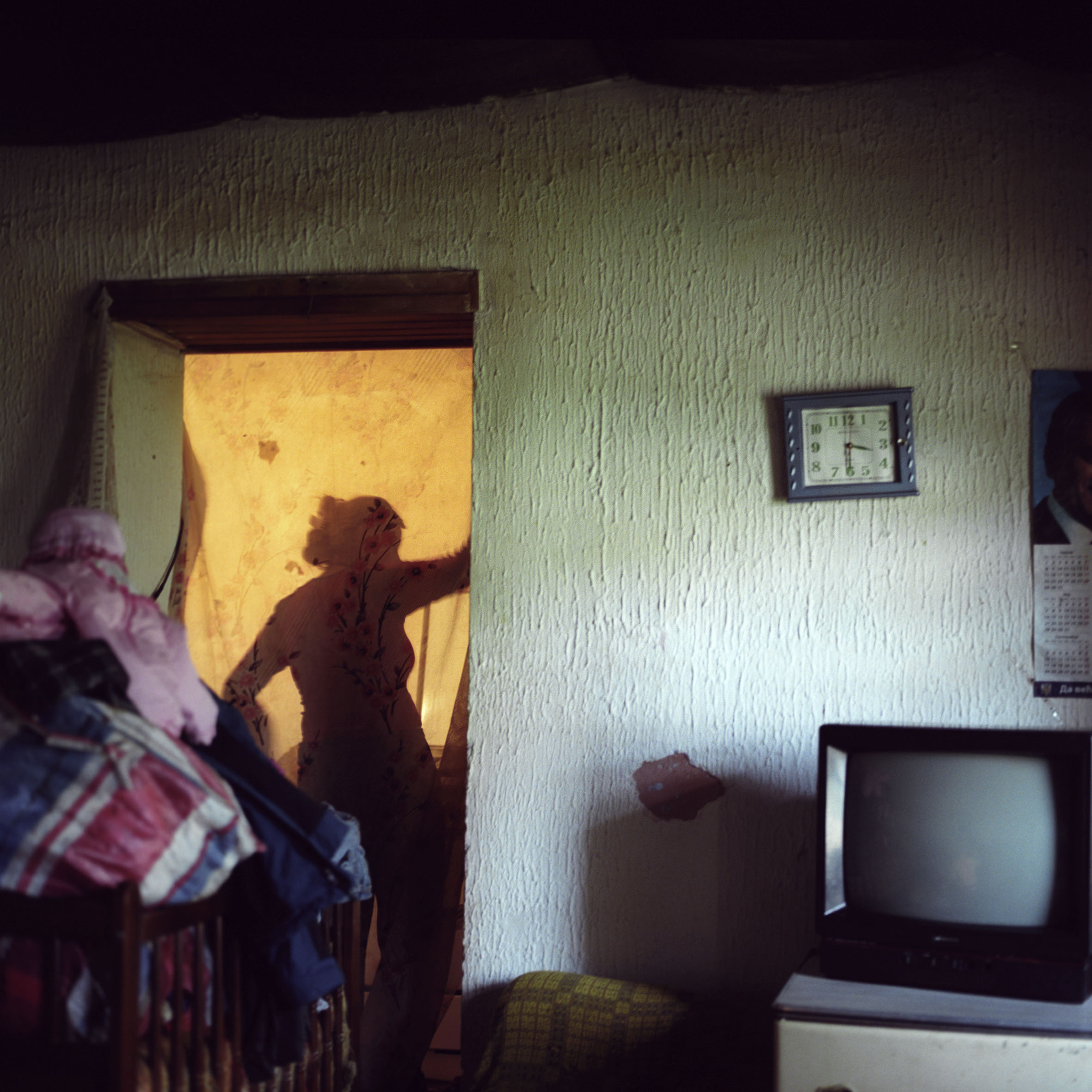
Jasna Brajilovic packs up her family’s belongings as they prepare to move to Croatia where her husband Milan is from. Jasna is from Serbia proper but met Milan while he was living as a refugee in her country. She is not worried about moving to Croatia despite having never gone further than Belgrade. Golobinci, Serbia.

Stana Davidovic is from Kostanica in central Croatia. Having survived WW2 she now lives as a refugee in Rtanj refugee collective centre in Serbia. Although her sister has returned to their village in Croatia, Stana is to upset by the destruction in her home country to live there again. Instead she remains as one of many Croatian Serb refugees in Serbia whose futures are uncertain.
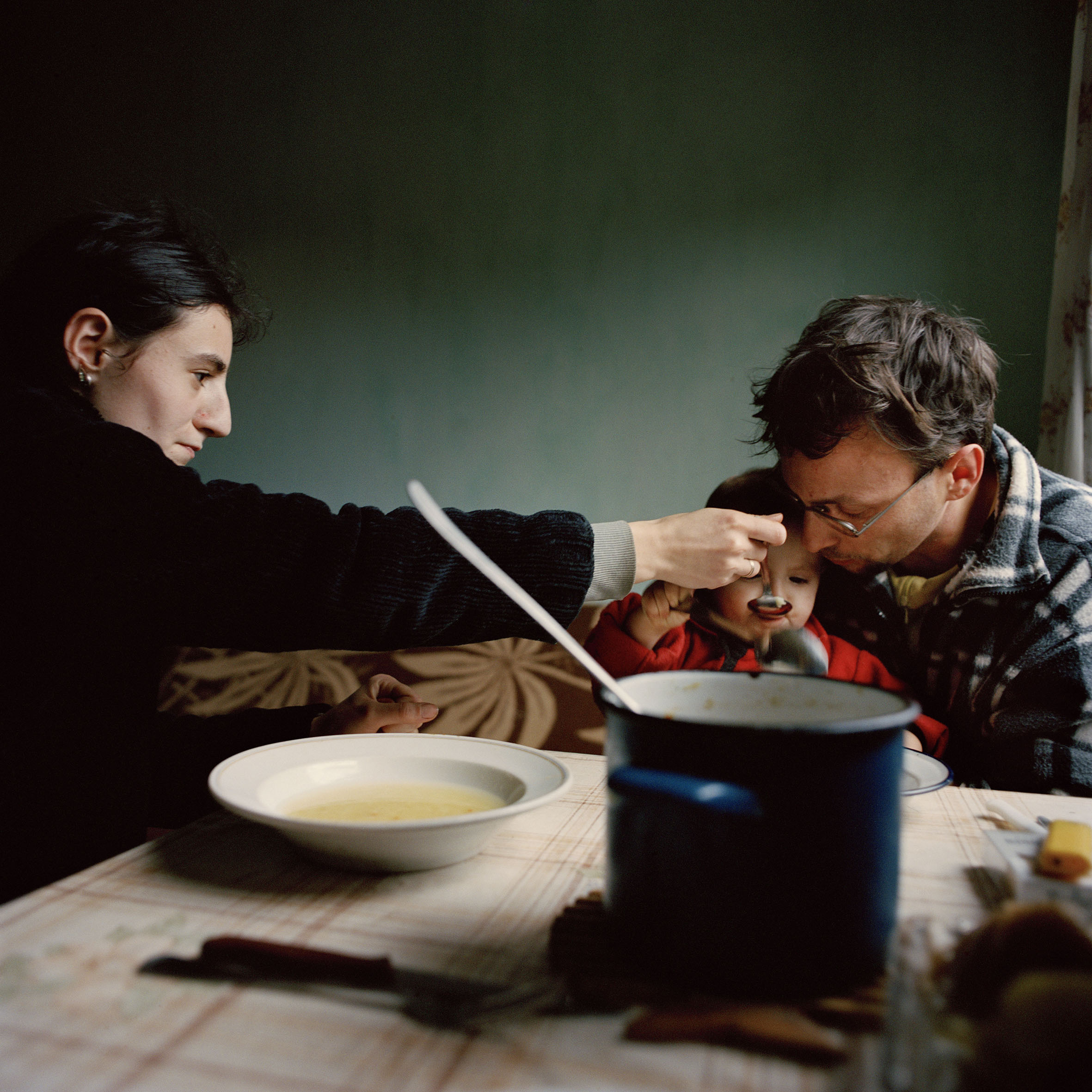
The Eremic family eats Sunday lunch in their newly rebuilt house. Despite having a small child Nebojsa struggled to gain any support from the government in order to repair the cottage he inherited from his Grandmother. Instead he was given building materials from a small international organistaion and did the work himself. Jurga, Croatia.
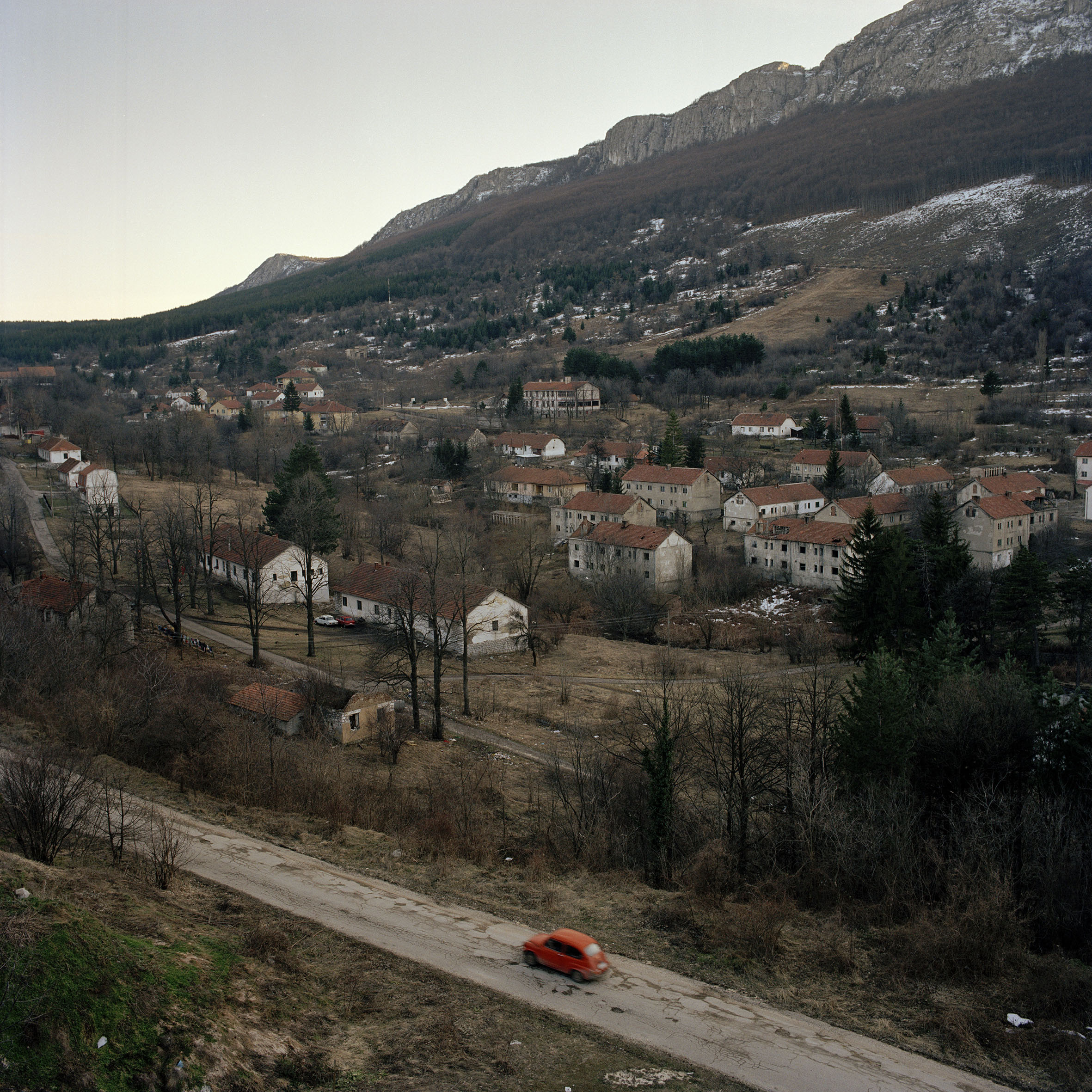
The village of Rtanj used to be a thriving mining community of almost 3,000 people. These days the few remaining villagers share the valley with the 80 or so IDP’s and refugees that are housed in the old workers barracks. Rtanj, Serbia.
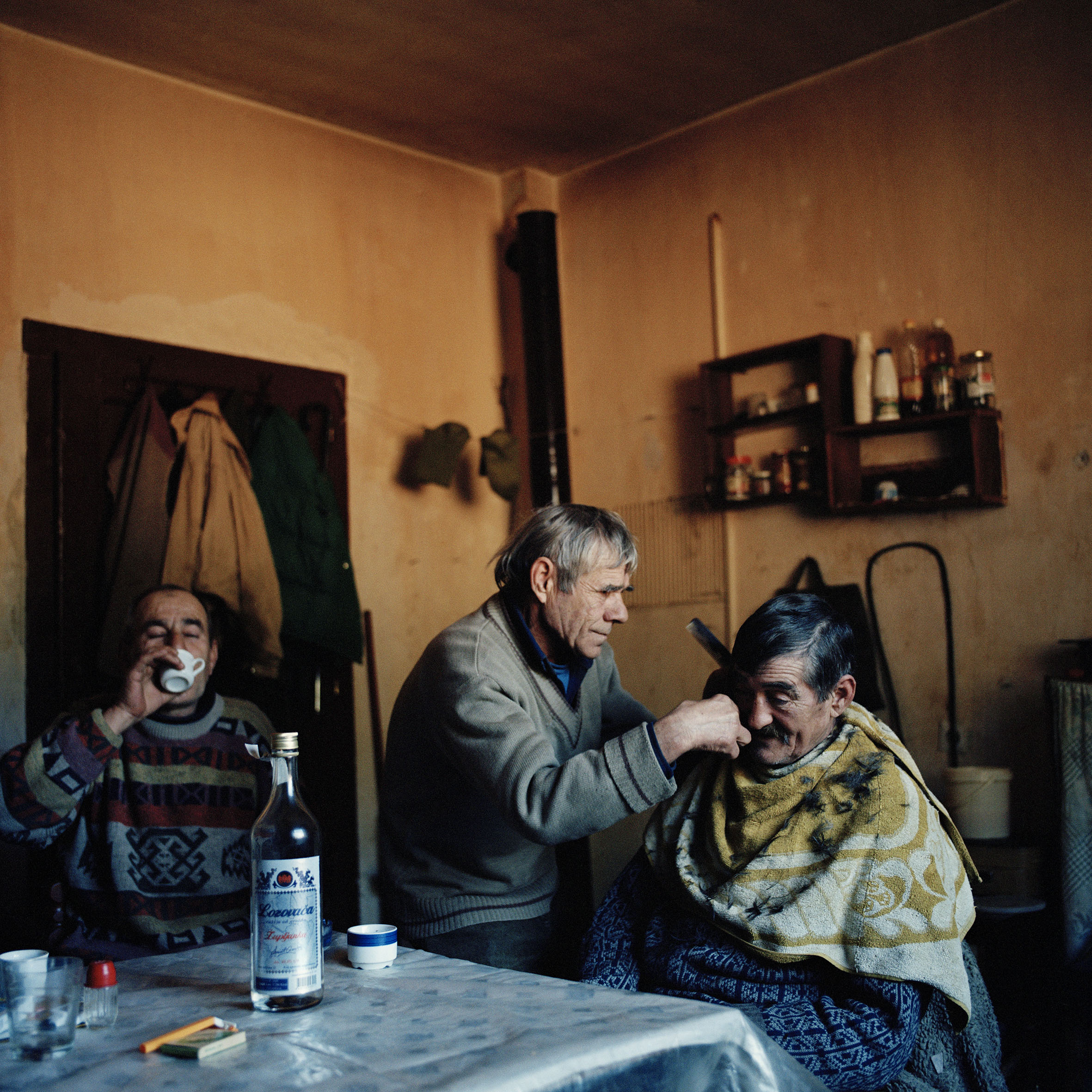
Sava Samardzija cuts the hair of his friend Slavolub Kristic while his brother Duro drinks brandy. The Samardzija brothers live as refugees in Rtanj collective centre in Serbia since fleeing their home in Croatia in 1995.
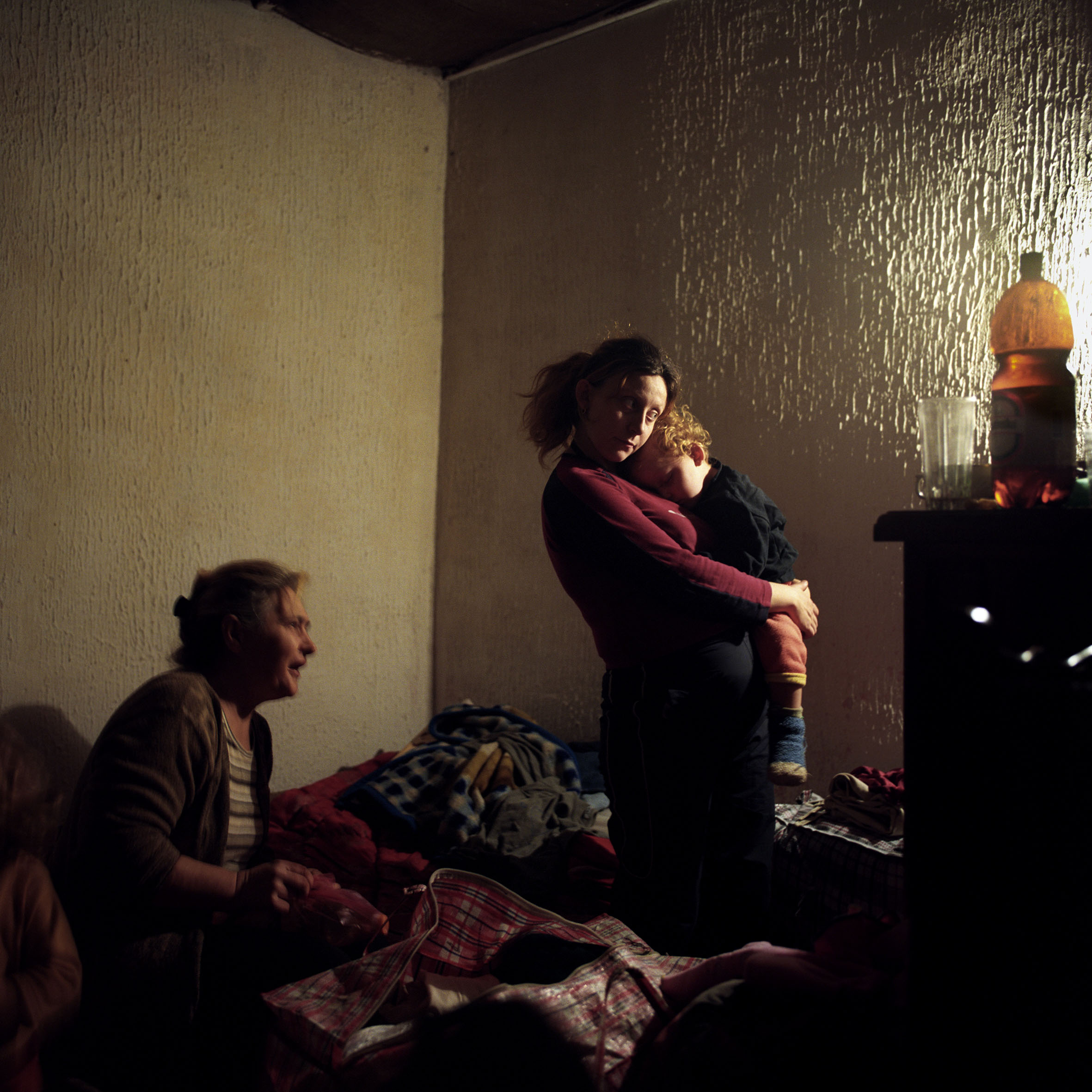
Jasna Brajilovic holds her son Marco as her mother in law helps to pack up her family’s belongings as they prepare to move to Croatia where her husband Milan is from. Jasna is from Serbia proper but met Milan while he was living as a refugee in her country. She is not worried about moving to Croatia despite having never gone further than Belgrade. Golobinci, Serbia.
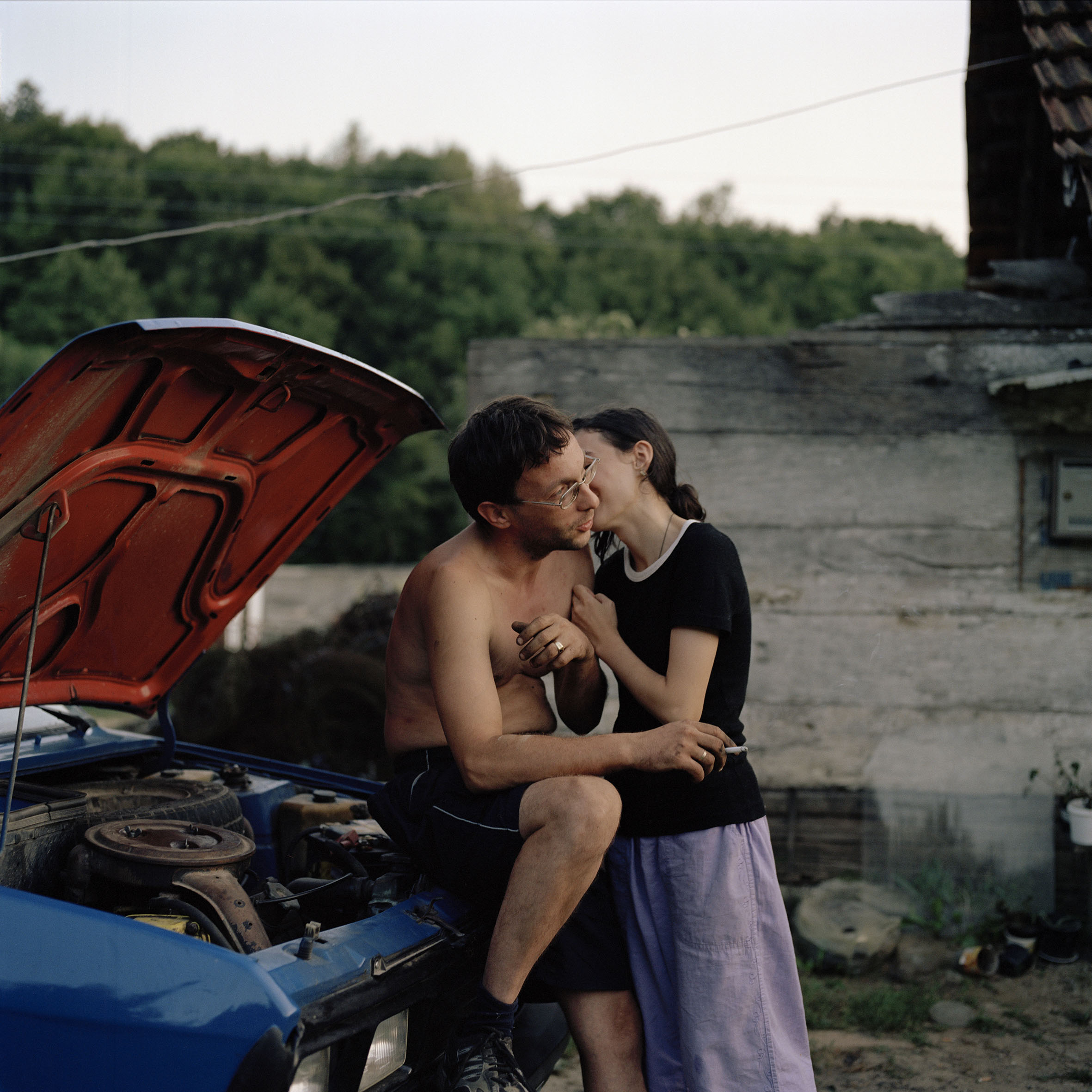
Nebojsa takes a break from fixing his blue Yugo to talk to wife Slavica. The young couple married against the wishes of Slavica’s parents who did not want their daughter to marry a Croatian Serb. They refused to attend the wedding and have not even come to see their grandson Nikola.
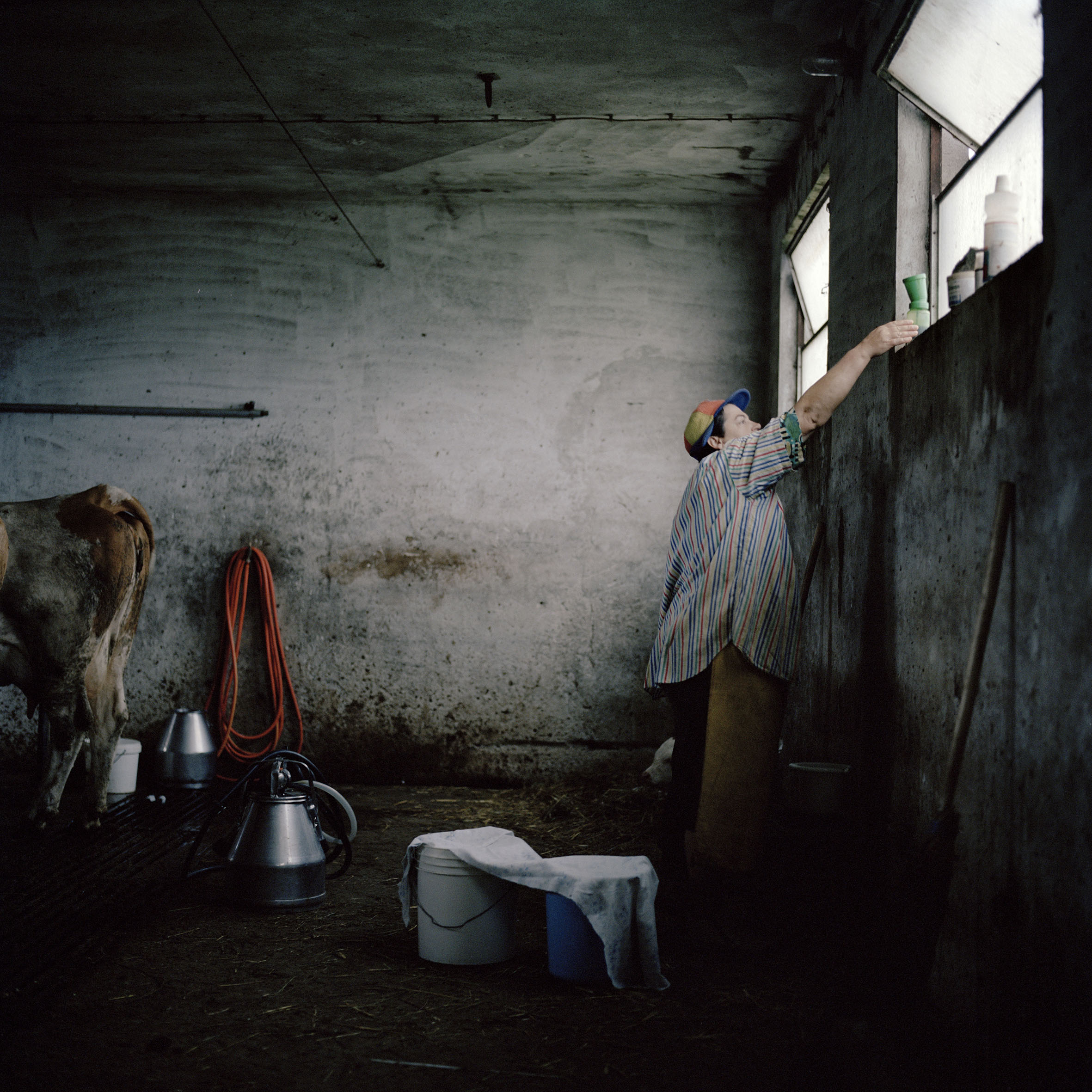
Janja Tisma rises at 6.30am to milk her cattle. Having fled Operation Storm Janja and her family returned to their farm in Tremusnjak, near the city of Sisak in 2001. Since returning they have not received any reconstruction grant. Despite such difficulties they are producing highly regarded milk for a distribution company in Sisak.
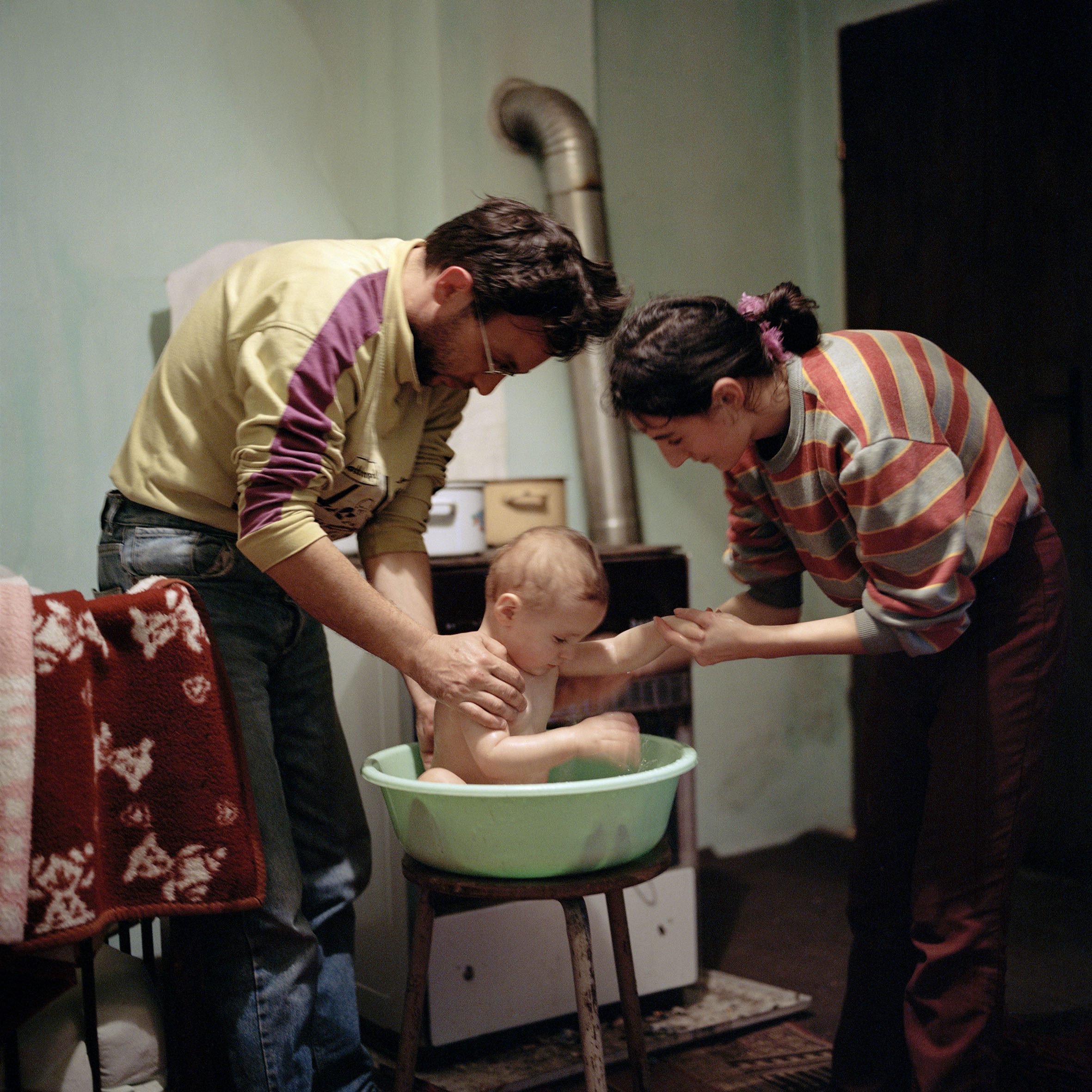
Nebojsa and Slavica Eremic wash baby son Nikola in their newly rebuilt home. Although they failed to receive building aid from the state, ADRA (a German NGO) donated building materials and Nebojsa did the work himself. Jurga, Croatia.

Milan is from Vost (Prior to war Virgmost) in central Croatia. He fled Operation Storm in ’95, first going to Kosovo as a refugee. There he met his third wife Danica, also from Croatia where they sustained the unrest and NATO bombing campaign in 1999.They now remain as refugees in Goranje Barbesh holding centre in Southern Serbia.
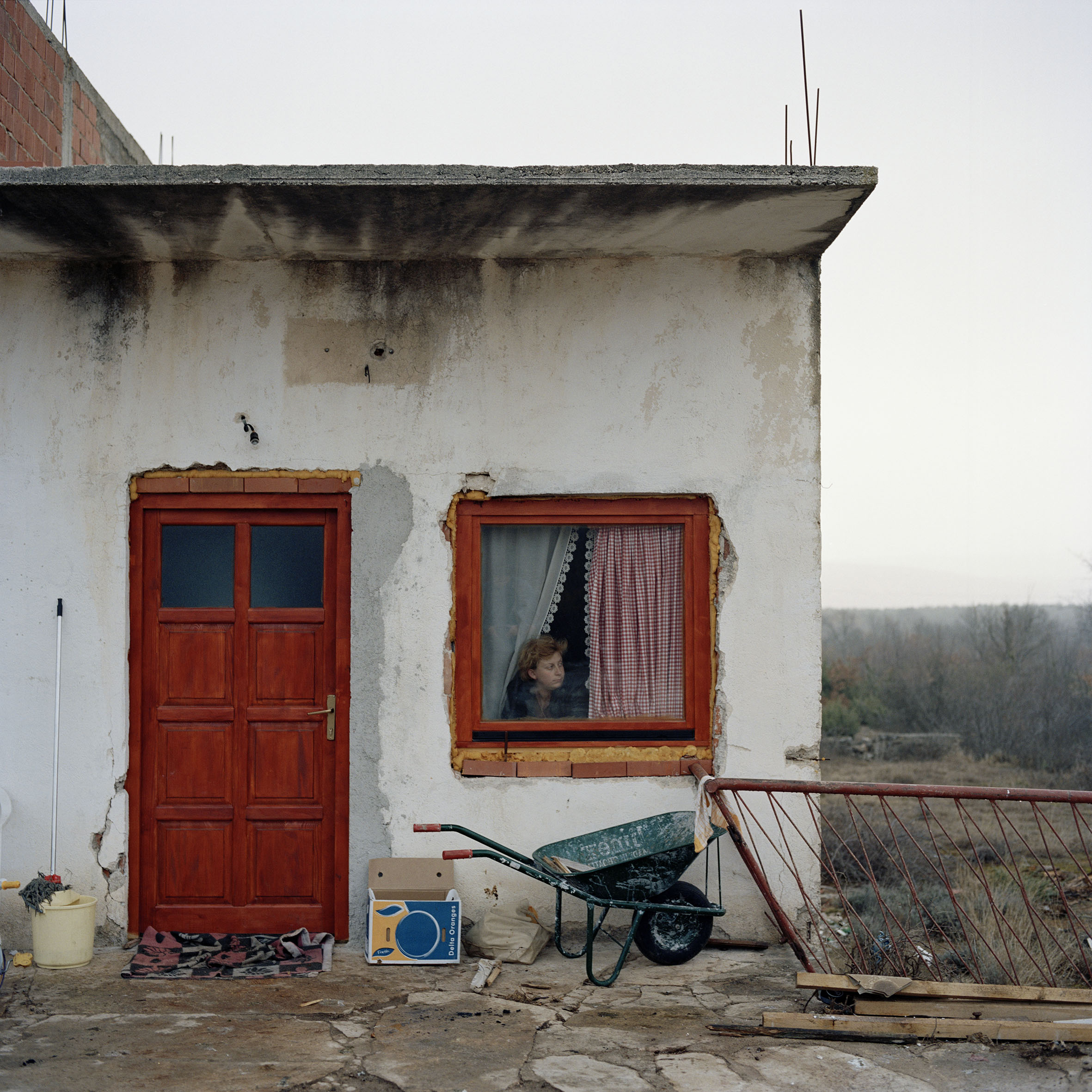
Jasna Calic looks out on the road from her kitchen window. The previous day while sitting in front of the house with her two young children a group of passing Croat youths shouted 'Fuck your Chetnik mother' at Jasna. This was the third racist incident the Calic family had experienced since moving back to Croatia 4 months ago. Brgud, Croatia.
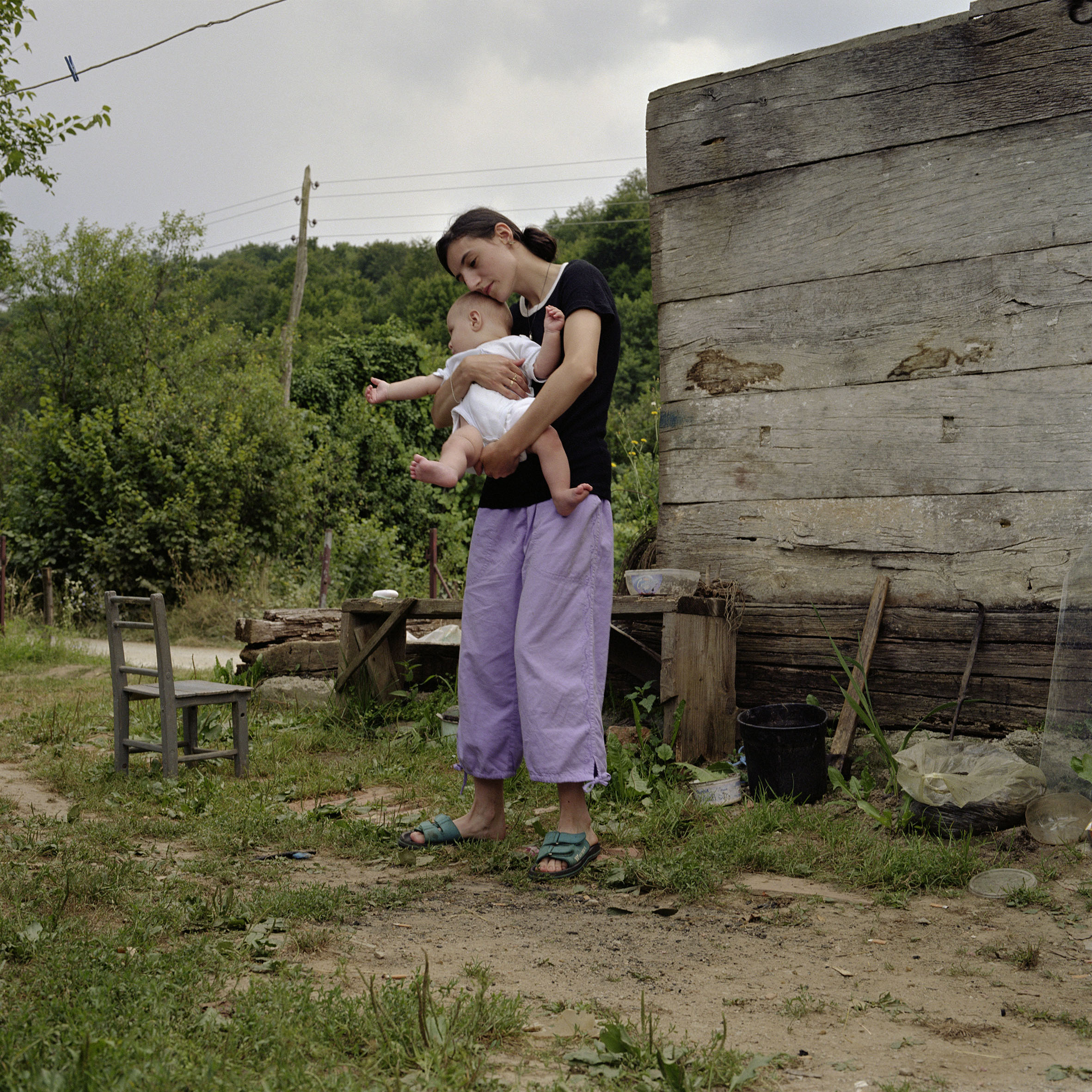
Slavica with baby Nikola outside their small cottage in Jurga, Croatia.
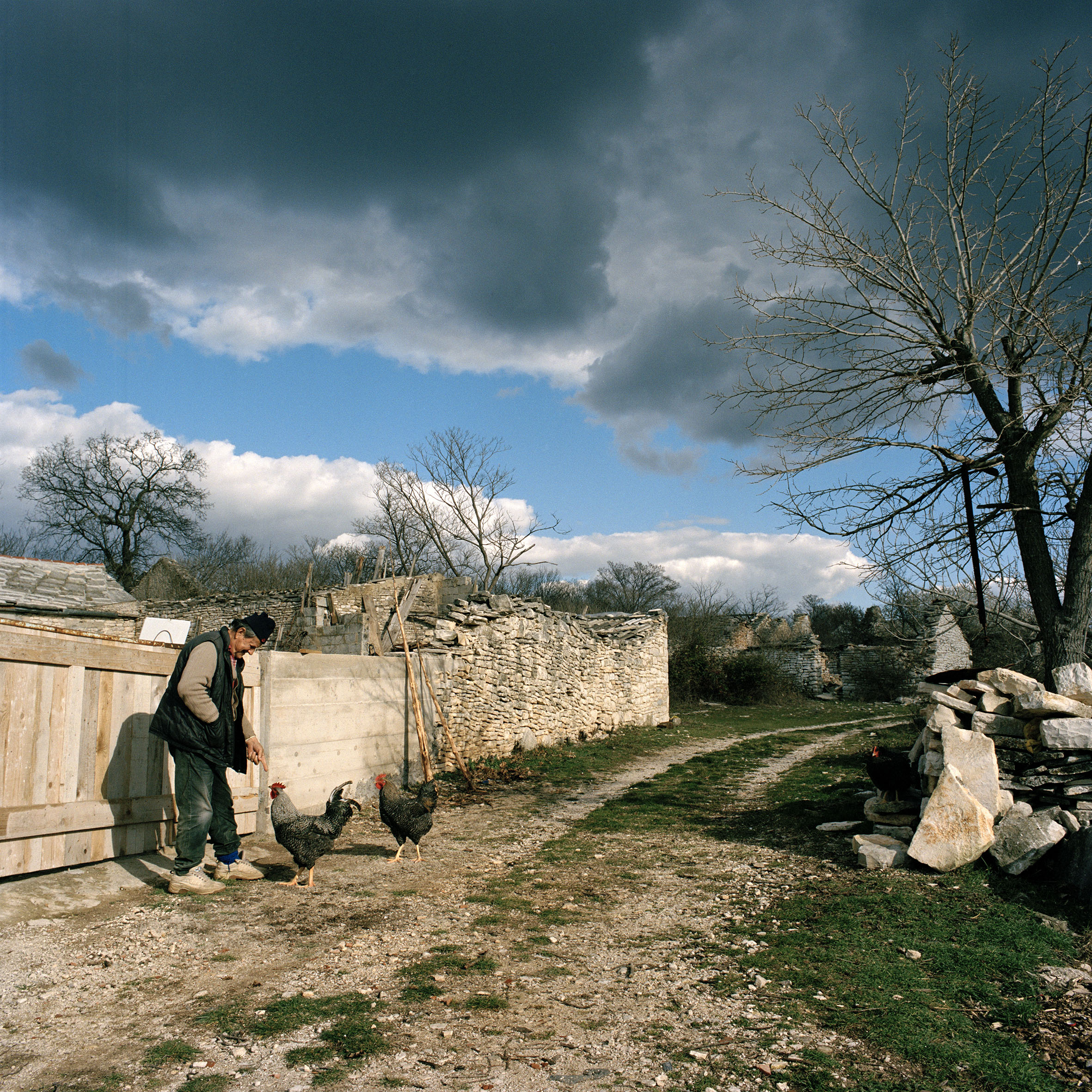
Branko Banic outside his house in Brgud, Sothern Croatia. He was born here and lived here all his life until being displaced to Serbia in 1995. Now he is home for good.
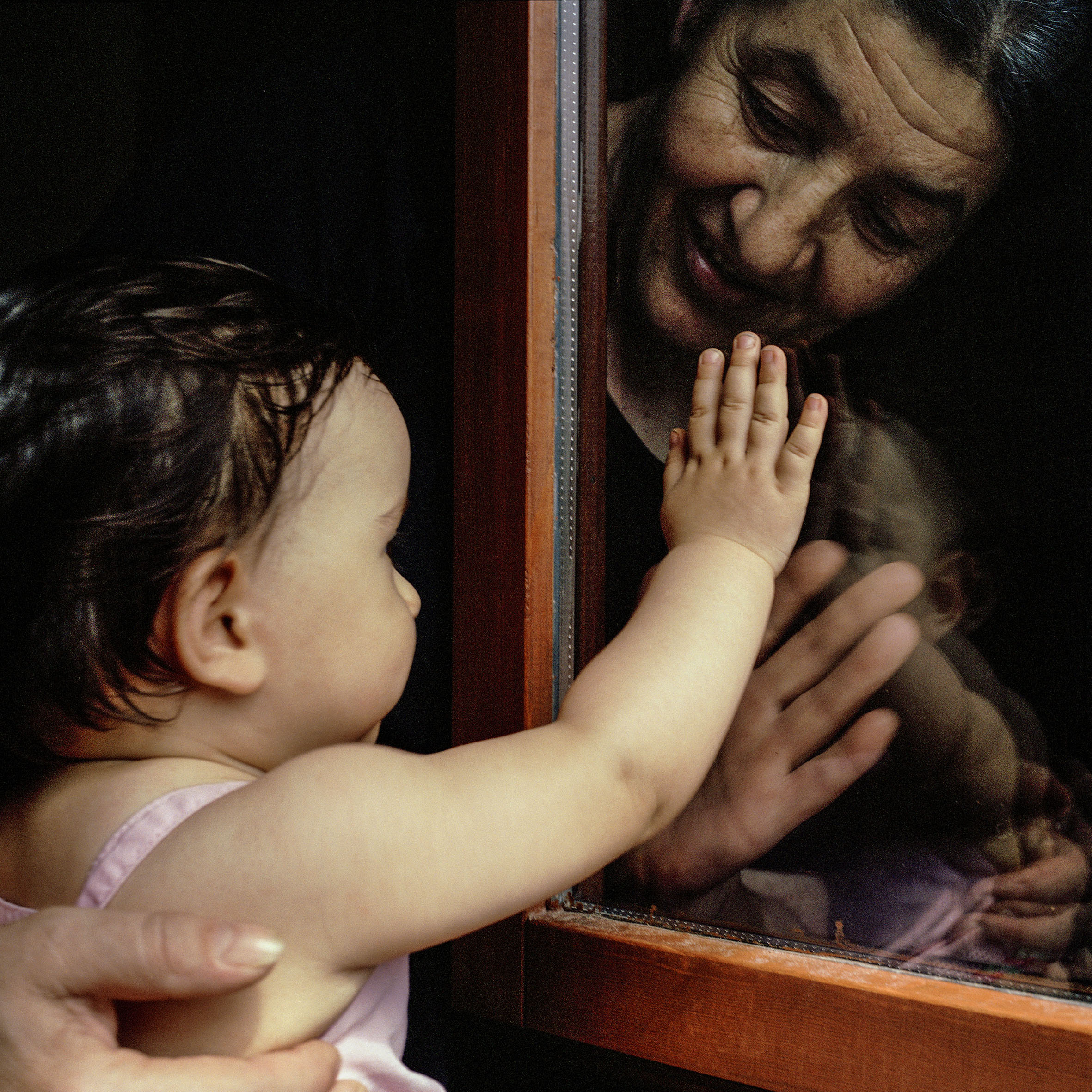
Nada Beader plays with her Niece’s daughter Gorana. Gorana’s mother Volga returned to her partially destroyed flat in Knin town centre in 2001. With the help of the OSCE she secured state funded reconstruction and now lives there with Gorana and her Mother.
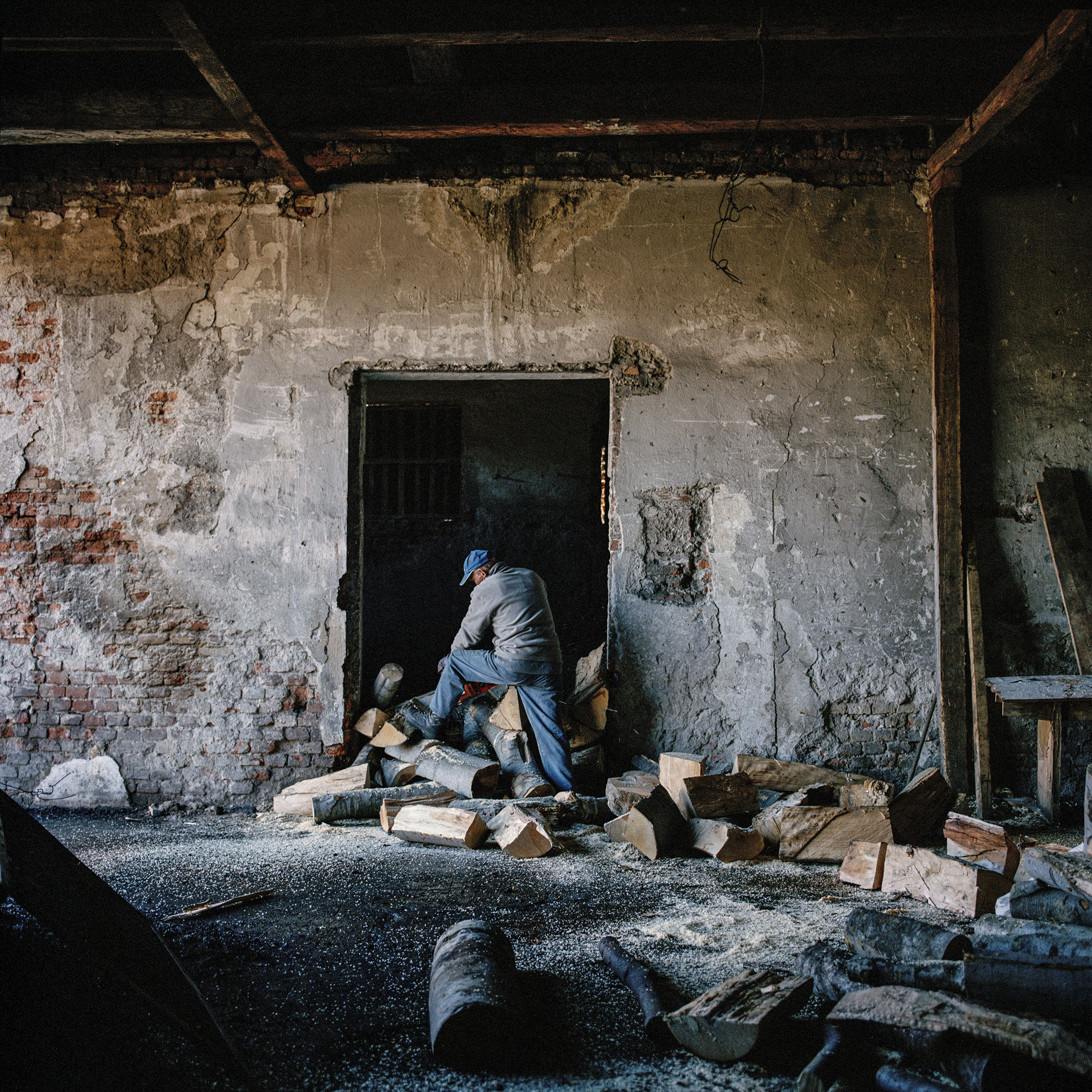
Mirko Gvoic cuts firewood for the boiler that heats the rooms at Rtanj refugee centre. Rtanj, Serbia.
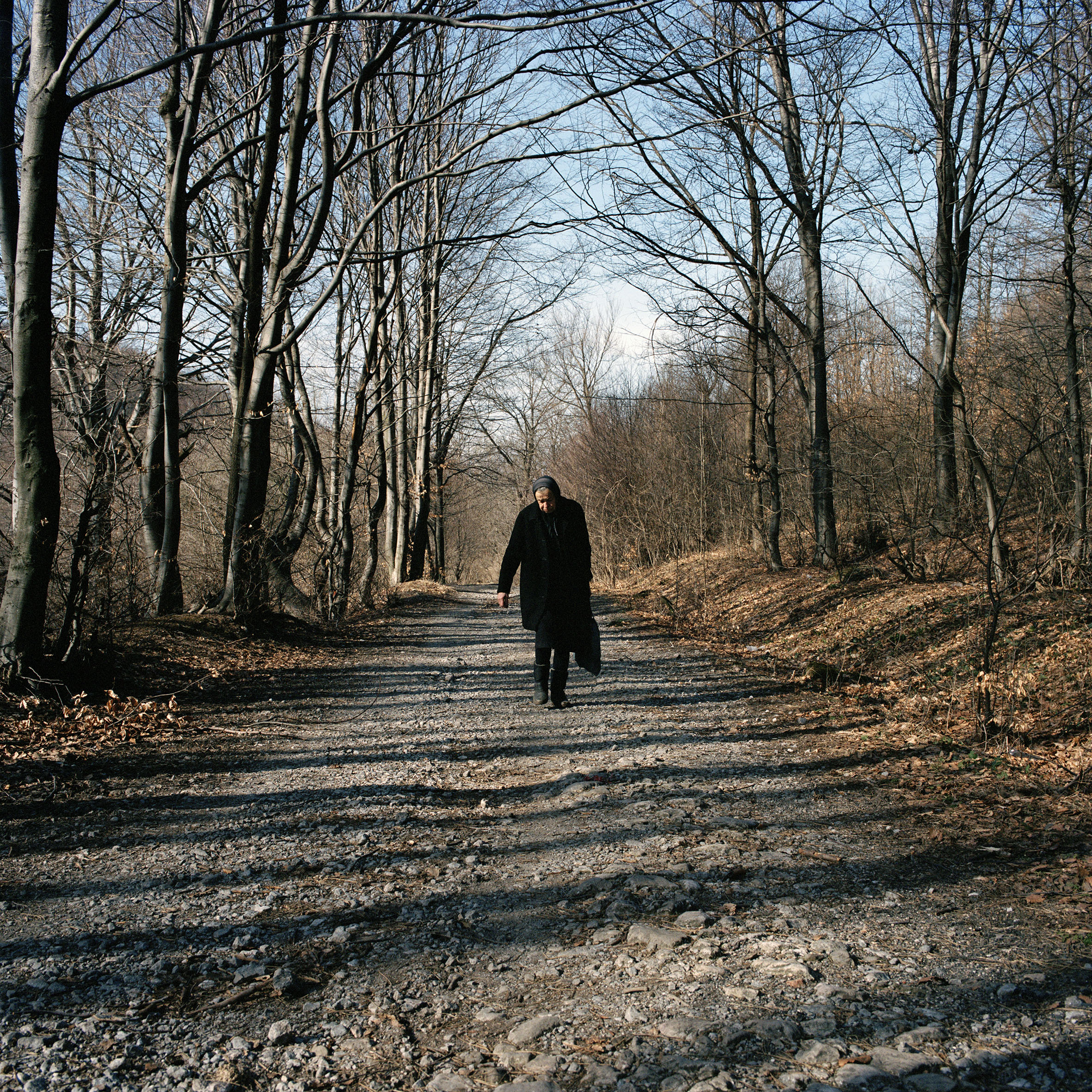
Stana Davidovic walks back to her room after collecting fresh water from a well in the forest. She says the water that the refugees get in the barracks is contaminated. Rtanj refugee centre, Serbia.

























Slavica Eremic feeds her baby son Nikola while her husband Nebojsa sleeps. 21-year-old Slavica married Serbian Nebojsa when she was 19. Nebojsa had returned to Croatia after several years of exile in Serbia only to find his family home inhabited by a Bosnian refugee. The young family now live in what used to be Nebojsa’s grandmothers house. Jurga, Croatia.
Workers from the Croatian Red Cross measure the window and door frames of Milan Calic’s destroyed home the day after he returned from 12 years of exile in Serbia. The fittings must be installed before his family can move into the house. Brgud, Croatia.
Slavica Eremic washes clothes in an outside trough in front of her house. It is their only source of running water but has been stagnant for too long and is undrinkable. Instead they must collect water from their neighbours house.
Maria Banic rests while cleaning out her dilapidated home the day after she and her husband Branko returned to Croatia from 11 years of exile in Serbia.
Milica Calic and her father Milan in their tiny rented room in Serbia two days before their move back to Milan's childhood home in Southern Croatia. Golobinci, Serbia
37 year old Peda Radic is from Knin in Southern Croatia but was displaced by Operation Storm in 1995. Peda lives alone in Rtanj collective centre in South Eastern Serbia. His last remaining family have turned their backs on him due to his drink problem.
Milan Calic says goodbye to friends and family before returning to his home in Croatia with his partner and their two children. Golobinci, Serbia.
Maria Banic returns to her destroyed home near the town of Benkovac in the South of Croatia for the first time in eleven years. She and her husband Branko were part of a returnee convoy from Serbia organised by the UNHCR and Croatian Red Cross.
Branko Banic makes a customary cup of Turkish coffee in his newly rebuilt kitchen. When he and his wife Maria returned to Croatia in 2006 their house was completely dilapidated. After 6 months of living with cousins nearby the elderly couple were gifted some help by the Norwegian refugee council and are today beginning to gain back their old lives. Brgud, Croatia.
Jasna Brajilovic packs up her family’s belongings as they prepare to move to Croatia where her husband Milan is from. Jasna is from Serbia proper but met Milan while he was living as a refugee in her country. She is not worried about moving to Croatia despite having never gone further than Belgrade. Golobinci, Serbia.
Stana Davidovic is from Kostanica in central Croatia. Having survived WW2 she now lives as a refugee in Rtanj refugee collective centre in Serbia. Although her sister has returned to their village in Croatia, Stana is to upset by the destruction in her home country to live there again. Instead she remains as one of many Croatian Serb refugees in Serbia whose futures are uncertain.
The Eremic family eats Sunday lunch in their newly rebuilt house. Despite having a small child Nebojsa struggled to gain any support from the government in order to repair the cottage he inherited from his Grandmother. Instead he was given building materials from a small international organistaion and did the work himself. Jurga, Croatia.
The village of Rtanj used to be a thriving mining community of almost 3,000 people. These days the few remaining villagers share the valley with the 80 or so IDP’s and refugees that are housed in the old workers barracks. Rtanj, Serbia.
Sava Samardzija cuts the hair of his friend Slavolub Kristic while his brother Duro drinks brandy. The Samardzija brothers live as refugees in Rtanj collective centre in Serbia since fleeing their home in Croatia in 1995.
Jasna Brajilovic holds her son Marco as her mother in law helps to pack up her family’s belongings as they prepare to move to Croatia where her husband Milan is from. Jasna is from Serbia proper but met Milan while he was living as a refugee in her country. She is not worried about moving to Croatia despite having never gone further than Belgrade. Golobinci, Serbia.
Nebojsa takes a break from fixing his blue Yugo to talk to wife Slavica. The young couple married against the wishes of Slavica’s parents who did not want their daughter to marry a Croatian Serb. They refused to attend the wedding and have not even come to see their grandson Nikola.
Janja Tisma rises at 6.30am to milk her cattle. Having fled Operation Storm Janja and her family returned to their farm in Tremusnjak, near the city of Sisak in 2001. Since returning they have not received any reconstruction grant. Despite such difficulties they are producing highly regarded milk for a distribution company in Sisak.
Nebojsa and Slavica Eremic wash baby son Nikola in their newly rebuilt home. Although they failed to receive building aid from the state, ADRA (a German NGO) donated building materials and Nebojsa did the work himself. Jurga, Croatia.
Milan is from Vost (Prior to war Virgmost) in central Croatia. He fled Operation Storm in ’95, first going to Kosovo as a refugee. There he met his third wife Danica, also from Croatia where they sustained the unrest and NATO bombing campaign in 1999.They now remain as refugees in Goranje Barbesh holding centre in Southern Serbia.
Jasna Calic looks out on the road from her kitchen window. The previous day while sitting in front of the house with her two young children a group of passing Croat youths shouted 'Fuck your Chetnik mother' at Jasna. This was the third racist incident the Calic family had experienced since moving back to Croatia 4 months ago. Brgud, Croatia.
Slavica with baby Nikola outside their small cottage in Jurga, Croatia.
Branko Banic outside his house in Brgud, Sothern Croatia. He was born here and lived here all his life until being displaced to Serbia in 1995. Now he is home for good.
Nada Beader plays with her Niece’s daughter Gorana. Gorana’s mother Volga returned to her partially destroyed flat in Knin town centre in 2001. With the help of the OSCE she secured state funded reconstruction and now lives there with Gorana and her Mother.
Mirko Gvoic cuts firewood for the boiler that heats the rooms at Rtanj refugee centre. Rtanj, Serbia.
Stana Davidovic walks back to her room after collecting fresh water from a well in the forest. She says the water that the refugees get in the barracks is contaminated. Rtanj refugee centre, Serbia.